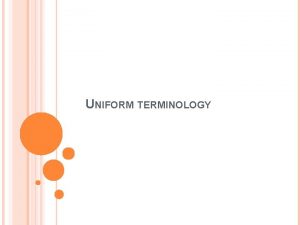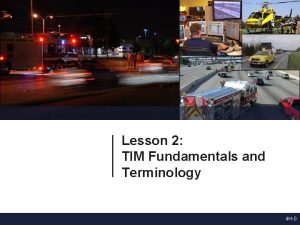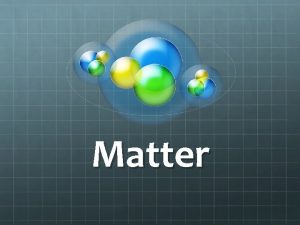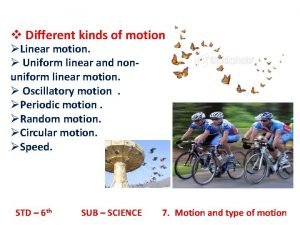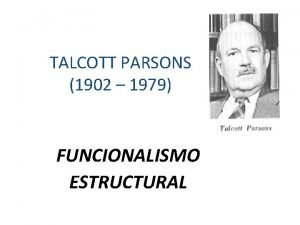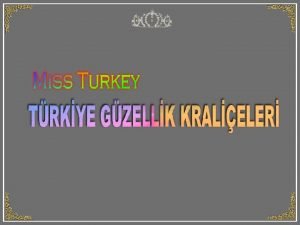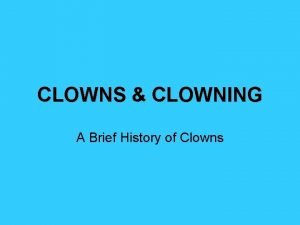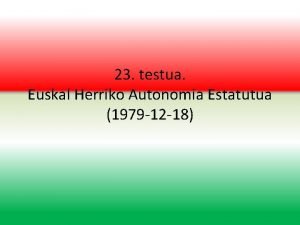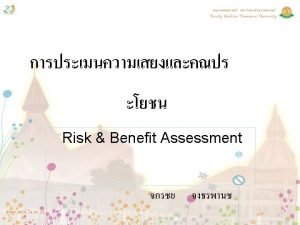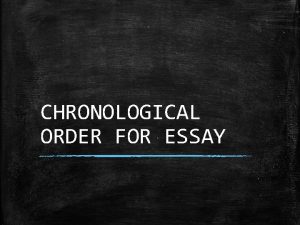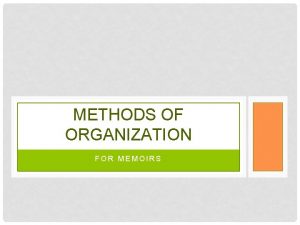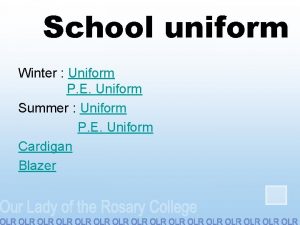UNIFORM TERMINOLOGY CHRONOLOGICAL DEVELOPMENT v In 1979 1











- Slides: 11

UNIFORM TERMINOLOGY

CHRONOLOGICAL DEVELOPMENT v In 1979 1 st edition of uniform terminology was approved and published by AOTA Purpose: To create an uniform system for reporting Occupational Therapy services for reimbursement. v In 1989 2 nd edition of uniform terminology was approved and published by AOTA. Document of it outlined two Domains: Performance Areas and performance Components Purpose: To depict a common and consistent terminology for clinical practice, policy making and education. v In 1994 3 rd edition had been further expanded by AOTA to reflect current profile to incorporate contextual aspect of performance. Now Performance Areas, Performance Components and Performance Contexts are the parameters of Occupational Therapy’s domains of concern. Purpose: To foster consistency in terminology among Occupational Therapists

PERFORMANCE AREAS v Activities of daily living v Work and productive activity v Play or leisure activities

PERFORMANCE COMPONENTS Sensorimotor components Cognitive integration and components Psychosocial skills and components

PERFORMANCE CONTEXTS Temporal Aspect( Chronological, Developmental, Life cycle And Disability status) Environment Aspect( Physical, Social and Cultural)

In 2002, A study was conducted to find out agreement between therapists’ and uniform terminology on definitions of terms On the basis of the findings of the study it was decided to abandon the use of uniform terminology

OCCUPATIONAL THERAPTY PRACTICE FRAMEWORK Purpose to introduce: To categorize and organize the field of Occupational Therapy in a logically consistent manner that would be understandable and accessible to person with the field as well as external or outside readers. Structure of framework: framework divided into two components: 1. Domains 2. Process

DOMAINS Explains: Profession’s purpose Profession’s focus and Areas in which it assists people Categorization: into six main categories: Areas of Occupation Performance skills Performance pattern Contexts Activity demands Client factors

These main categories are divided into sub categories, subcategories and so on. As for example Areas of occupation is divided into seven categories: 1. Activities of daily living (ADL) 2. Instrumental activities of daily living (IADL) 3. Education 4. Work 5. Play 6. Leisure 7. Social participation And social participation is categorize into three subcategories: 1. community 2. family 3. Peer/ friends

PROCESS EXPLAINS The method by which Occupational Therapy Intervention takes place. Categorization: into three main categories: Evaluation Intervention Outcomes

REFERENCES The Occupational Therapy Practice Framework: Domain and Process, AOTA Press. Butts D. S. & Nelson D. L. (2007): agreement between Occupational Therapy practice framework classifications and Occupational Therapists' Classification. American Journal of Occupational Therapy, 61, 512 -518.
 The use of uniform terminology and plain english
The use of uniform terminology and plain english Occupational therapty
Occupational therapty Lane designation terminology
Lane designation terminology How do you classify uniform and non-uniform mixtures?
How do you classify uniform and non-uniform mixtures? Granola homogeneous or heterogeneous
Granola homogeneous or heterogeneous Contoh aliran seragam
Contoh aliran seragam Linear motion images
Linear motion images Funcionalismo estructural
Funcionalismo estructural Dilara haraççı
Dilara haraççı Who created clowns
Who created clowns Euskal herriko autonomia estatutua iruzkina 1979
Euskal herriko autonomia estatutua iruzkina 1979 The belmont report principles
The belmont report principles

